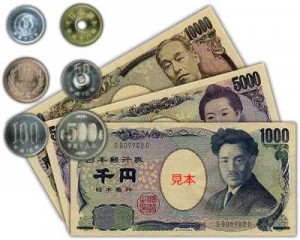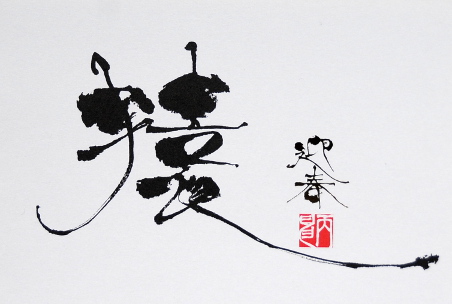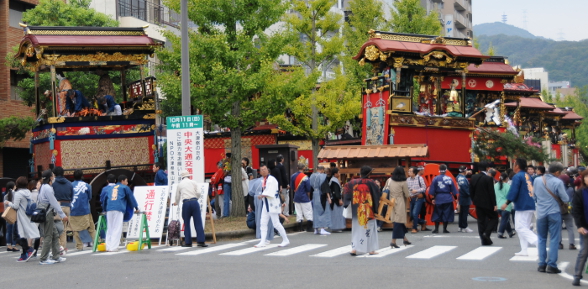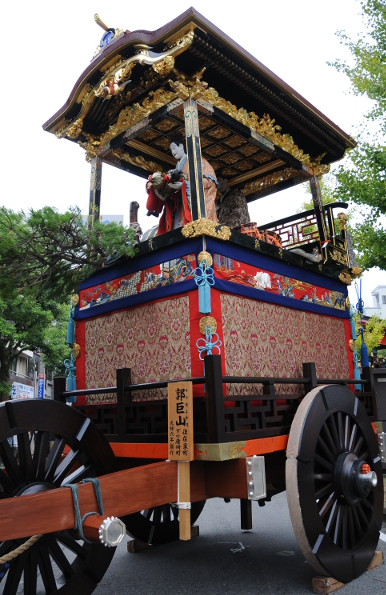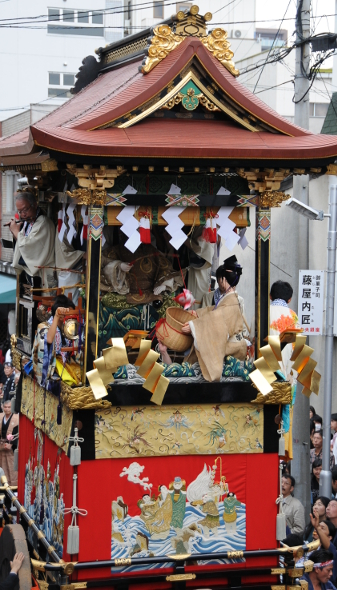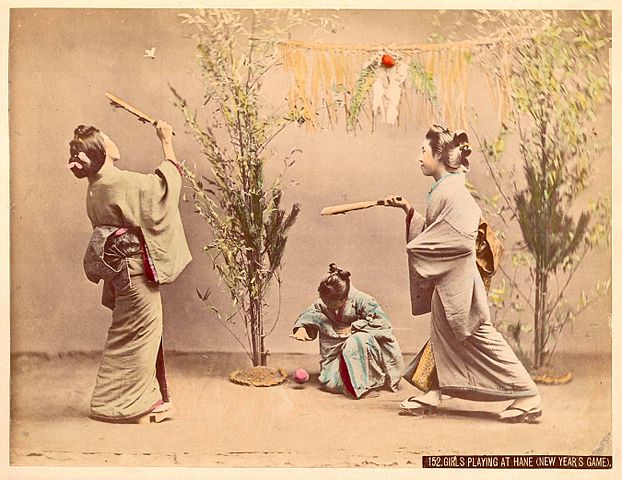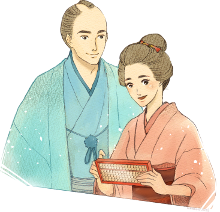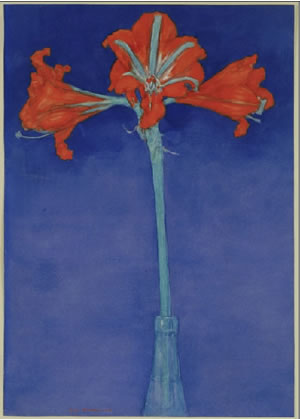Uji is a small city between Kyoto and Nara with about 185.000 inhabitants. It lies on the Uji river, an important waterway of olden times, which one can travel up until Lake Biwa. The first settlement in Uji was established in the 4th century, and in the 7th century the first bridge across the river was built.
The town, with its mountains coming up to the river, was a popular destination for outings of the nobility that lived in Kyoto and served in the palace there. The last ten chapters of the most famous Japanese novel – the Genji Monogatari, which was written around 1000 CE – take place in Uji. Some people claim it was even written there when Murasaki Shikibu retreated to a monastery for a while, but then others dispute her having written those chapters altogether. There are at least two statues of Murasaki near the river, and a museum devoted entirely to the Genji Monogatari.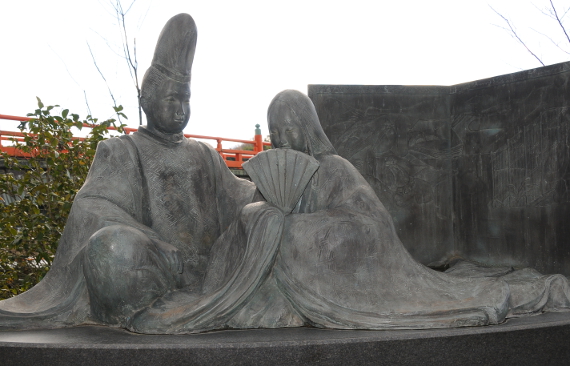 The most famous attraction of Uji, however, is Byodo-in temple. It was originally a villa, built in 998 by a high-ranking court official, but only some 50 years later it was turned into a Buddhist temple by his son. The main hall or Phoenix hall, is supposed to resemble the palace in the Land of Happiness. It is a bit hard to see in the photo below, but the building is essentially a T-shaped structure, where the left and right parts of the horizontal stroke represent the wings, and the vertical stroke the tail of a phoenix. Where the two strokes meet, the head of the bird is supposed to be, and there is placed a large statue of Amida Buddha.
The most famous attraction of Uji, however, is Byodo-in temple. It was originally a villa, built in 998 by a high-ranking court official, but only some 50 years later it was turned into a Buddhist temple by his son. The main hall or Phoenix hall, is supposed to resemble the palace in the Land of Happiness. It is a bit hard to see in the photo below, but the building is essentially a T-shaped structure, where the left and right parts of the horizontal stroke represent the wings, and the vertical stroke the tail of a phoenix. Where the two strokes meet, the head of the bird is supposed to be, and there is placed a large statue of Amida Buddha.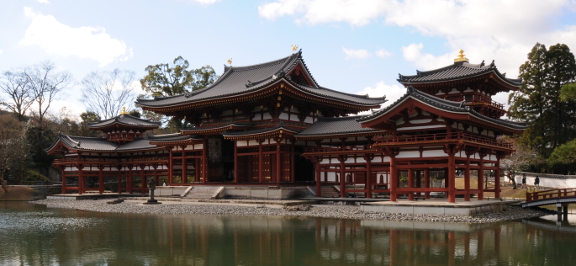 Byodo-in was designated as UNESCO World Heritage in 1994, and an image of it is prominently featured on the 10 YEN coin. One of the phoenixes on the roof – national treasures, by the way – is depicted on the 10.000 YEN bill of Japan. There is a large museum in Byodo-in showing Buddhist art that was made for and used in the temple. Even if you don’t buy the extra ticked to get you into the main hall, you can still get a feeling for how it would look inside.
Byodo-in was designated as UNESCO World Heritage in 1994, and an image of it is prominently featured on the 10 YEN coin. One of the phoenixes on the roof – national treasures, by the way – is depicted on the 10.000 YEN bill of Japan. There is a large museum in Byodo-in showing Buddhist art that was made for and used in the temple. Even if you don’t buy the extra ticked to get you into the main hall, you can still get a feeling for how it would look inside.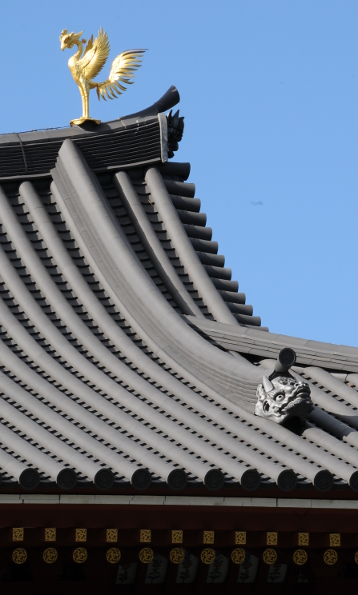 On crossing the river, there are the two main shrines of Uji, the Uji shrine at the bank of the river, and the Ujigami shrine a bit up the hill. Until the Meiji restoration, they were a unit, but now they are separate entities; and in 1994, Ujigami shrine was also registered as UNESCO World Heritage.
On crossing the river, there are the two main shrines of Uji, the Uji shrine at the bank of the river, and the Ujigami shrine a bit up the hill. Until the Meiji restoration, they were a unit, but now they are separate entities; and in 1994, Ujigami shrine was also registered as UNESCO World Heritage. 
Both the prayer hall of the shrine – the image right below – as well as the main hall are Japanese national treasures. Ujigami shrine, built around 1060 as a guardian shrine to Byodo-in temple, is the oldest original shinto shrine in Japan, quite a feat in a country where many so-called ancient buildings have burnt down and were rebuilt several times.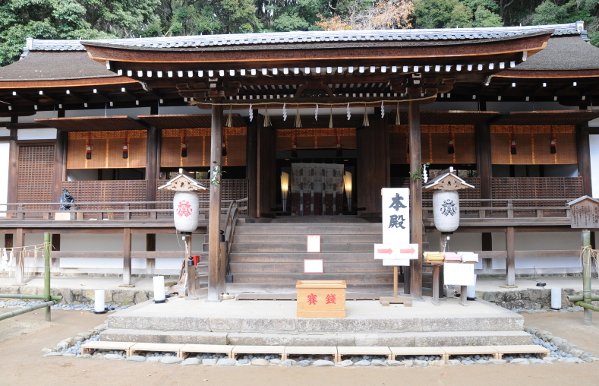
Another thing Uji is famous for its green tea. It is one of the first places of Japan where matcha green tea was cultivated, and from the 12th century until today, the quality is excellent. On the road from Uji station to Byodo-in temple, there are numerous shops that sell anything tea related, be it ever so vaguely: matcha chocolate and cookies, matcha Baumkuchen and soba,… but also utensils for Japanese tea ceremony, and cups and beakers. There are numerous different types of green tea, of course, from the cheap daily varieties to the expensive ones served only at tea ceremonies on special occasions. But, this is a topic for another time…

